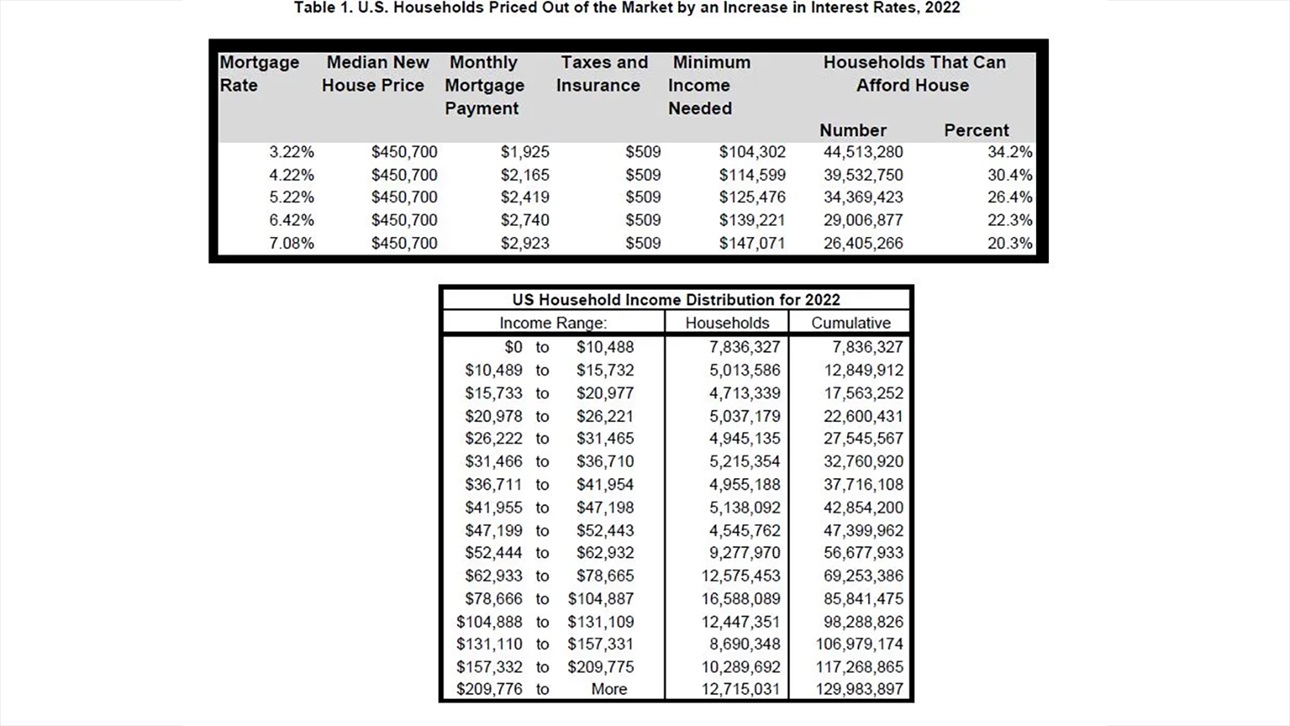The Difference Between a 3% and 7% Mortgage Rate: $1,000 Per Month
As the Federal Reserve continues to fight inflation, mortgage rates increased rapidly in 2022, starting the year at 3% and rising above 7% before dropping back to roughly 6.5% at the end of the year. How do rapidly rising mortgage rates affect housing affordability?
The difference between a slightly more than 3% mortgage rate and a 7% mortgage rate adds roughly an additional $1,000 mortgage payment to a typical, new median-priced single-family home and prices 18 million U.S. households out of the market for the home.
This means that a mortgage payment on a $450,700 home would have increased from $1,925 in January 2022 to $2,923 in late October when mortgage rates topped 7%.
And while mortgage rates fell back modestly to a level of 6.42% at the end of the year, the monthly mortgage payment on the same home increased from $1,925 in January when rates were just above 3%, to $2,740 in December when rates doubled, adding more than $800 to the cost of the home loan.
Higher mortgage rates have clearly worsened housing affordability as home prices remained high in 2022. As the charts below show, each 100-basis-point rise in mortgage rates requires roughly an additional $10,000 in household income to qualify for a similarly sized mortgage loan, and prices approximately five million additional households out of the market for a home at the same or similar price level.

NAHB economist Na Zhao provides more analysis in this Eye on Housing blog post.
Latest from NAHBNow
Dec 23, 2025
The 5 Types of Builders — and the One Built to ProsperMost builders want the same things: predictable profits, less stress, and a business that doesn’t grind them down year after year.
Dec 23, 2025
Lumber Capacity Has Peaked for 2025An annual revision to the Federal Reserve G.17 Industrial Production report shows current sawmill production levels above 2017 by 7.5%, but just 0.3% above 2023 levels.
Latest Economic News
Dec 22, 2025
State-Level Employment Situation: September 2025In September 2025, nonfarm payroll employment was largely unchanged across states on a monthly basis, with a limited number of states seeing statistically significant increases or decreases. This reflects generally stable job counts across states despite broader labor market fluctuations. The data were impacted by collection delays due to the federal government shutdown.
Dec 19, 2025
Existing Home Sales Edge Higher in NovemberExisting home sales rose for the third consecutive month in November as lower mortgage rates continued to boost home sales, according to the National Association of Realtors (NAR). However, the increase remained modest as mortgage rates still stayed above 6% while down from recent highs. The weakening job market also weighed on buyer activity.
Dec 18, 2025
Lumber Capacity Lower Midway Through 2025Sawmill production has remained essentially flat over the past two years, according to the Federal Reserve G.17 Industrial Production report. This most recent data release contained an annual revision, which resulted in higher estimates for both production and capacity in U.S. sawmills.
